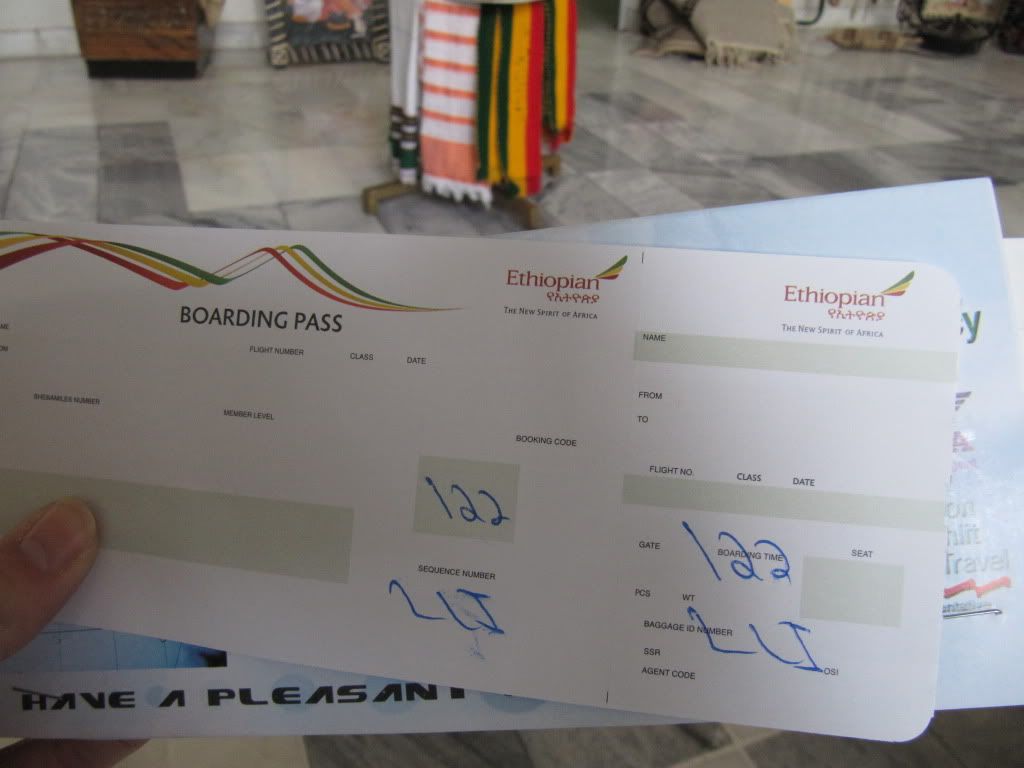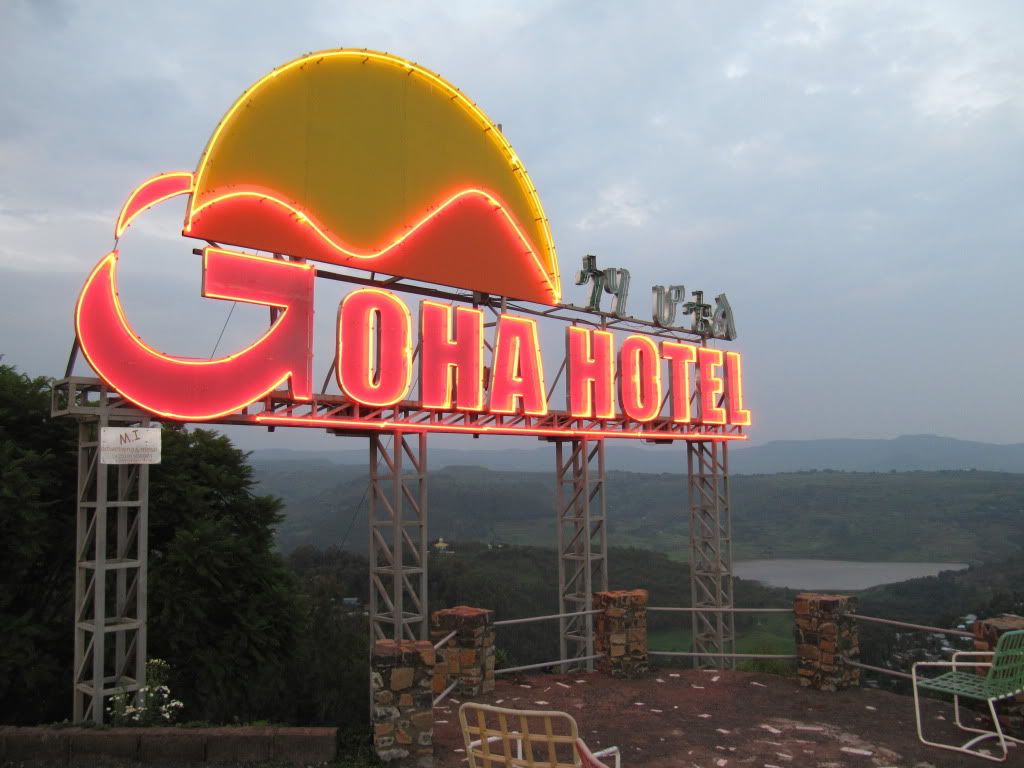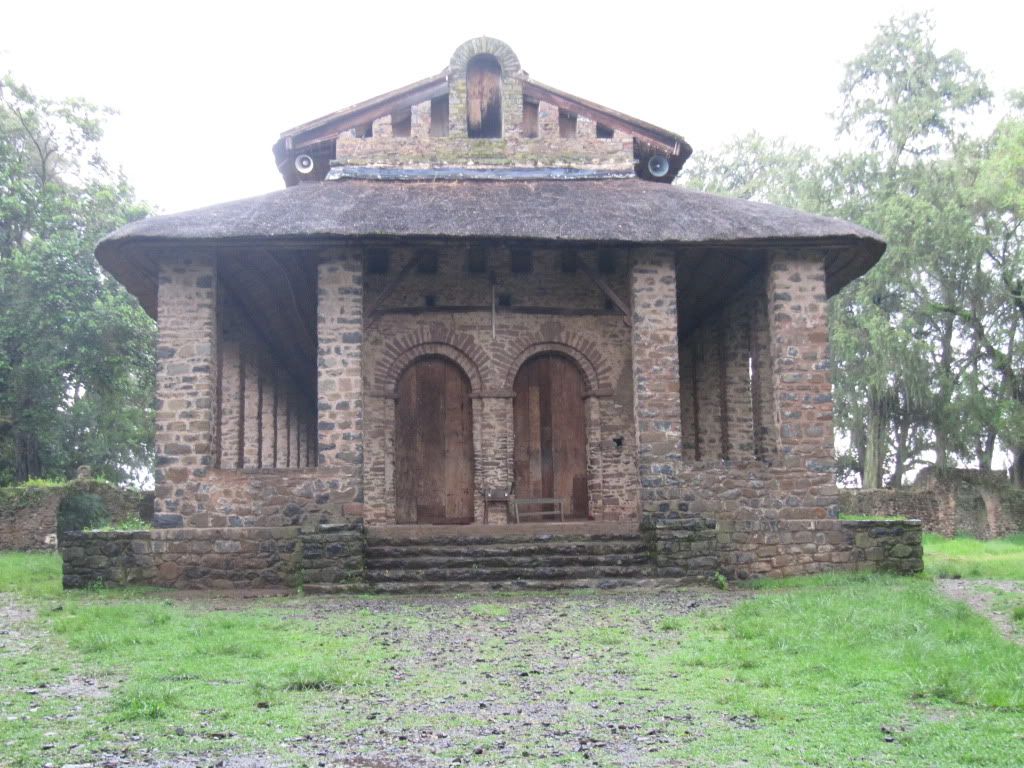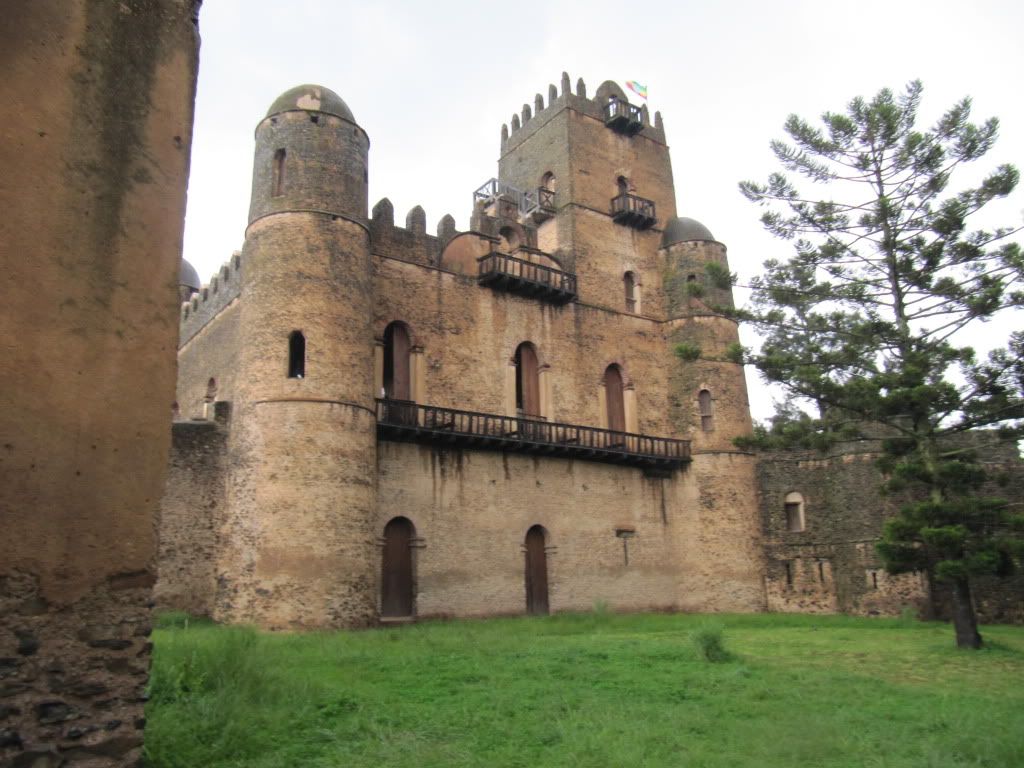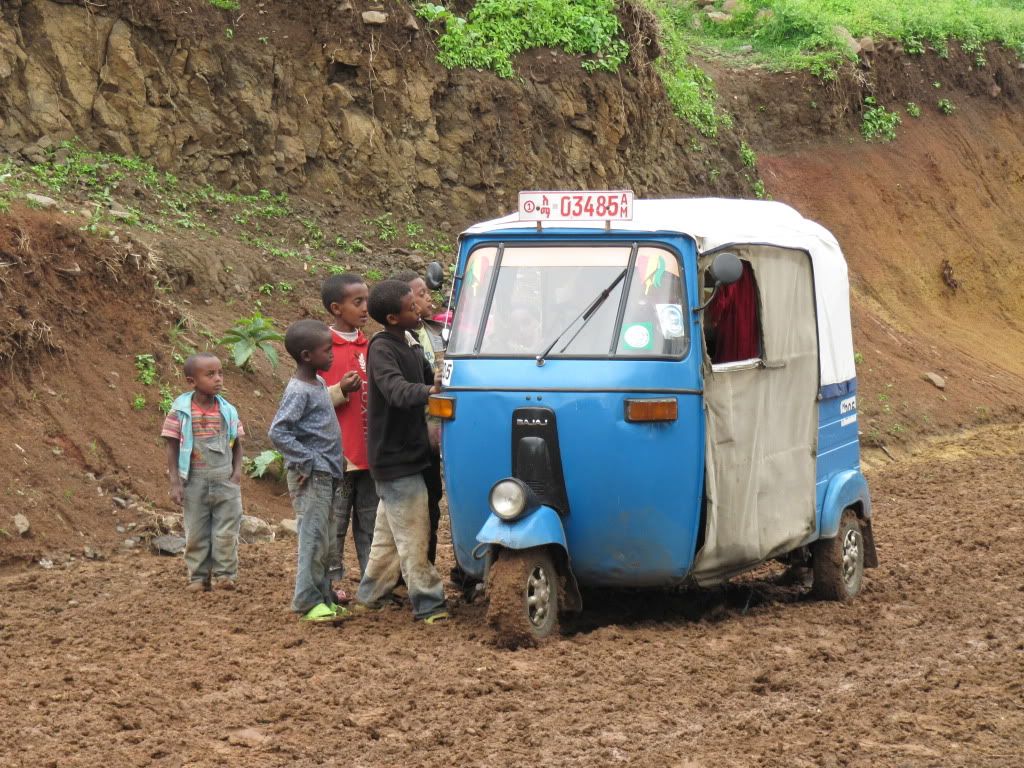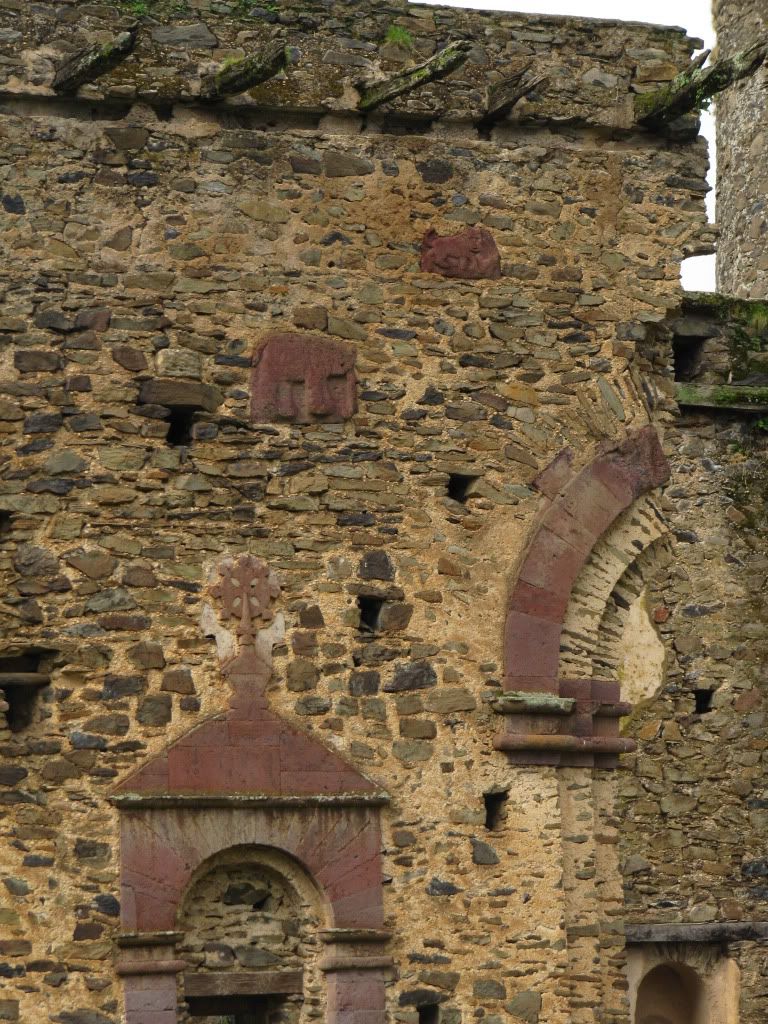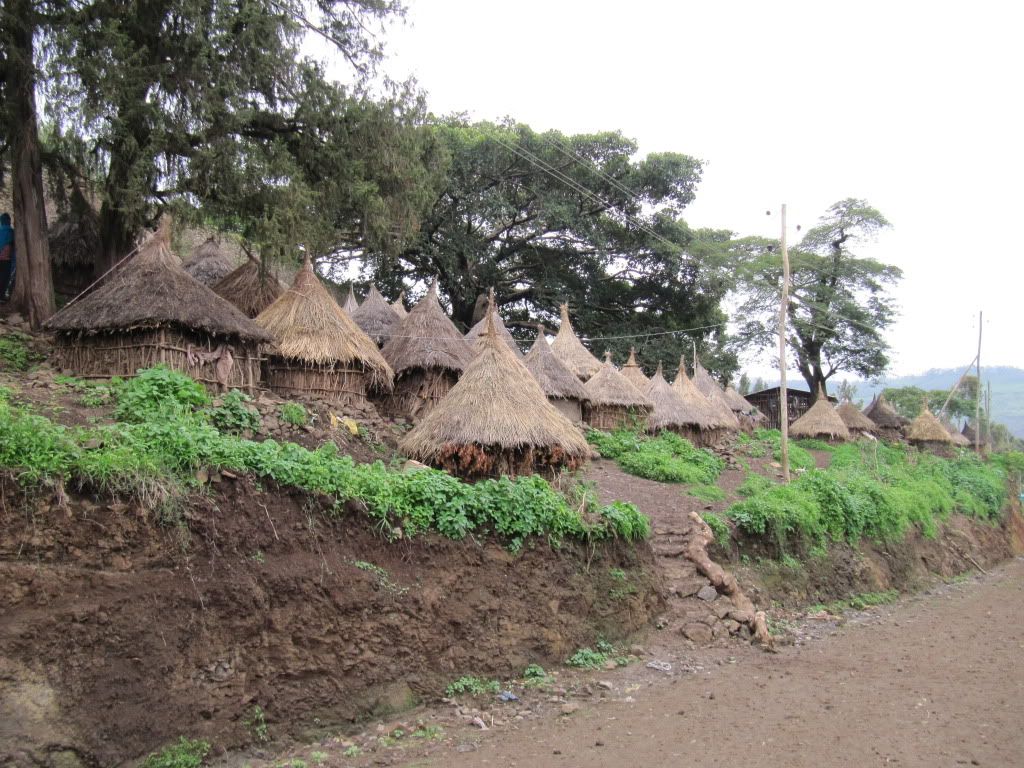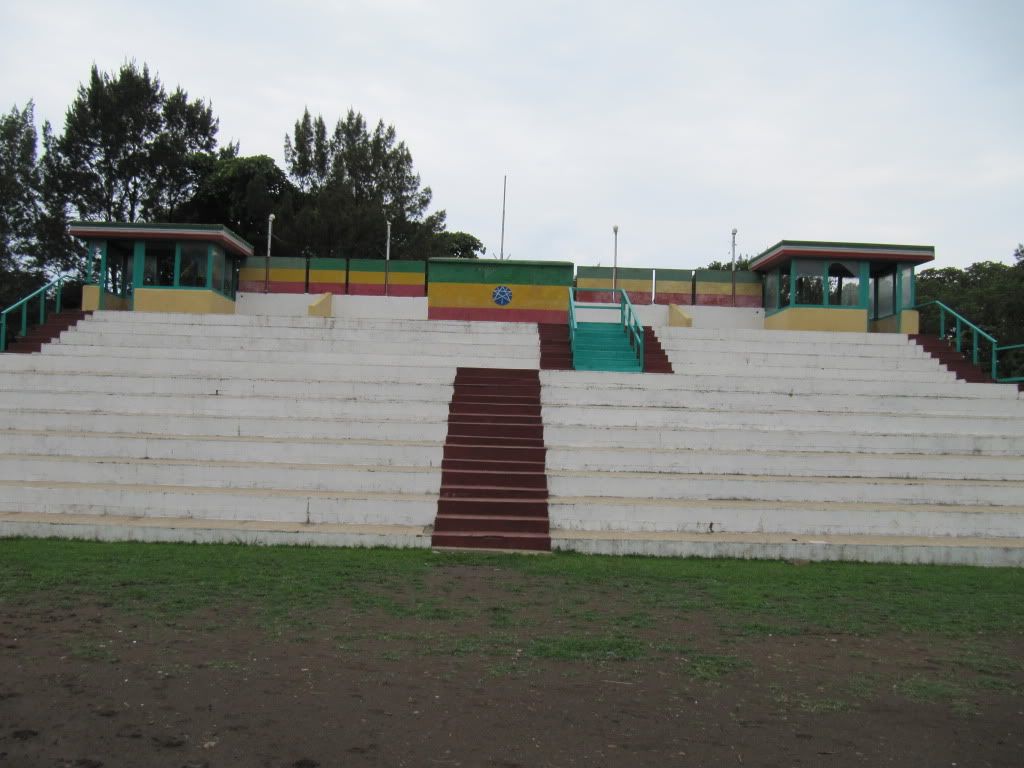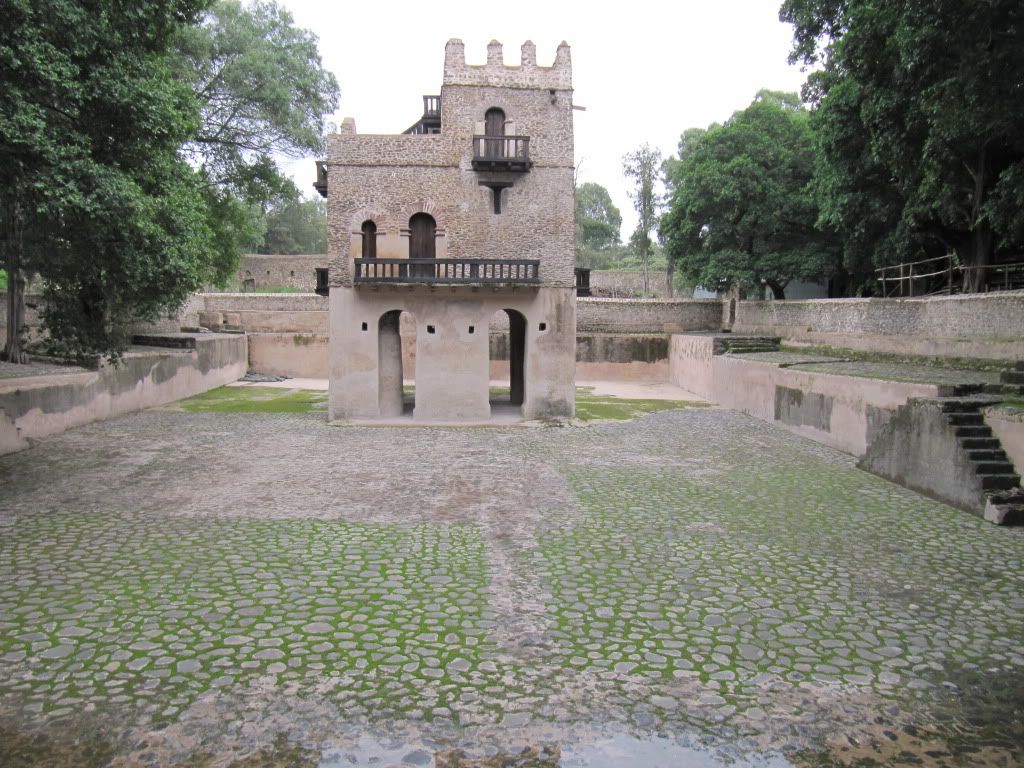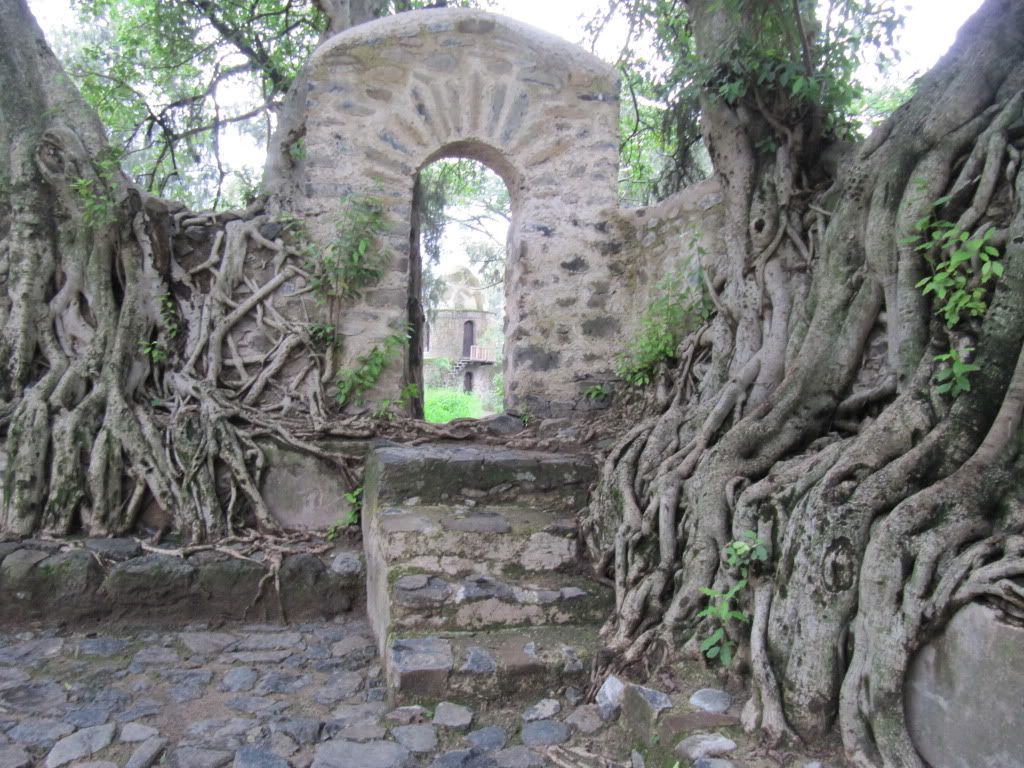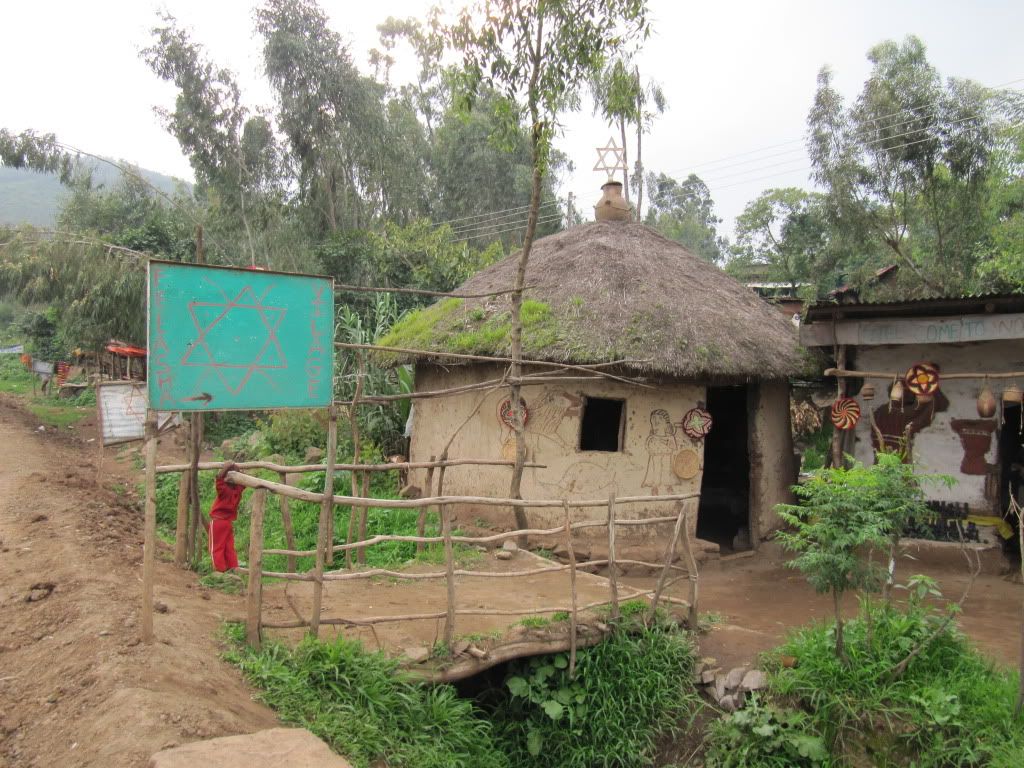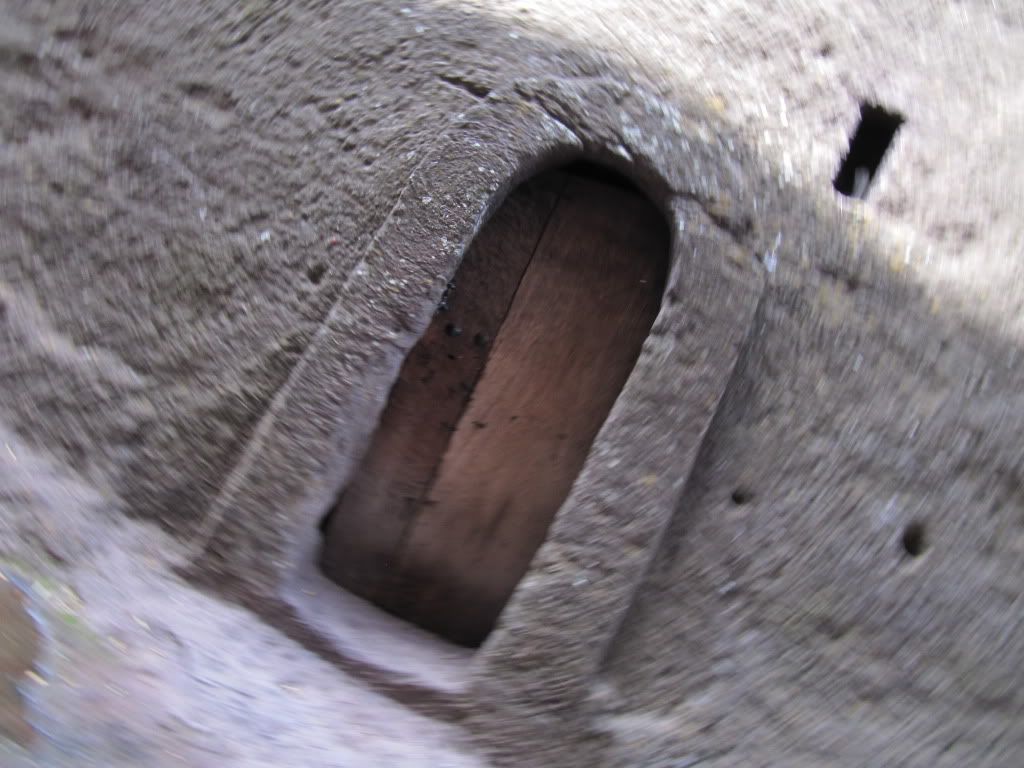“We’ve been to too many places.”
This is the comment whispered by my intrepid travel companion Sara as we visit the tenth of eleven rock hewn churches over the course of one day. Our guide seems to be underwhelmed by our reaction to these amazing structures, so we are doing our best to show verbal fascination for Lalibela’s rich Christian history. I think our attempts are failing miserably, as we have long reached our saturation point. Sara’s comment is also referring to the fact that we have already been lucky enough to visit so many amazing destinations in our short life spans, so it would probably appear by our guide that we aren’t moved by his tour.
But we are! We’re just tired…
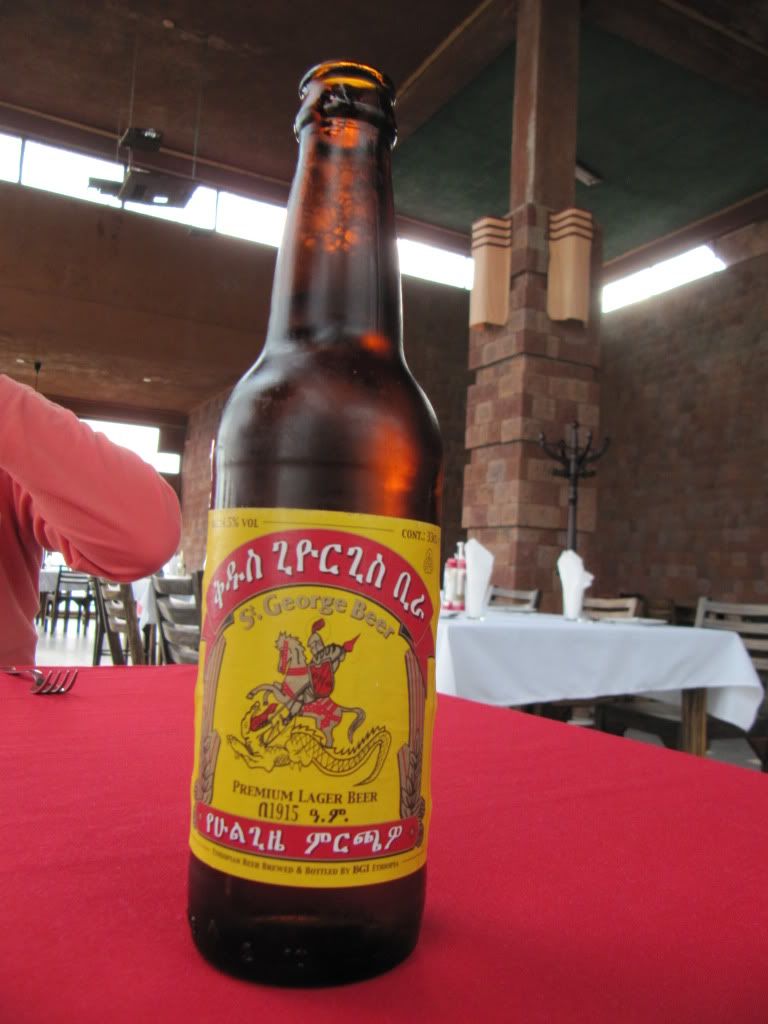
…and a little thirsty
I’m writing this entry from the van again as we thread the mountain roads of Lalibela and head to the airport for another morning flight. Rarely do Sara and I ever opt for a guided tour of a country, and right about now we know why.
The past four days, while logistically easy and extremely comprehensive, moves at a steady clip and has us feeling a lot like cattle. Each day we wake up and eat stomach-friendly carbs before transiting to a new town in order to get shuttled around to the slew of tourist sites. At the end of the day we are dumped at newest hotel in order to rest and eat more stomach friendly food before sleeping and starting the entire process anew. Not exactly our preferred mode of travel. Wash. Rinse. Repeat. Moo.
So with all of that said, I’m going to cram two towns into this posting. The objective here is two-fold: one, you can get a glimpse into the unusual and diverse beauty of these places, and secondly to provide you with a dose of our relentless sojourn into Ethiopian tourism.
We’re going to see some churches today, and luckily my guide doesn’t give tours that are pepperred with quizzes on the artwork- like my last guy did. I failed these tests miserably:
Bahar Dar guide: “What story do you think this biblical painting references?”
Me: “Uhhh….Jesus?”
I never claimed to be a religious studies scholar, and he didn’t ask me any further questions.
So back in Gondar, we are visiting Debre Berhane Selassie Church:
It rained a lot that afternoon, and this made for some modification in our means of transportation. Where our ride couldn’t go, we walked. The mud here is cool because it is tri-colored, but it also has super stickum properties that make for slightly comical negotiation of the terrain.

Gondar is a three hour drive to the Sudanese border, and as such serves as a main departure point for people headed west. This is also a jumping off point for UN vehicles, as you can see from this fleet parked in a nearby field.
So that was one day of sightseeing, and as you can imagine it was quite ambitious. We went to be tired and again got up so we could fly north to Lalibela, the town made famous for its 11th century rock hewn churches. There are eleven of them, and they were chiseled into form from the rock that formed the grounds of the mountains.
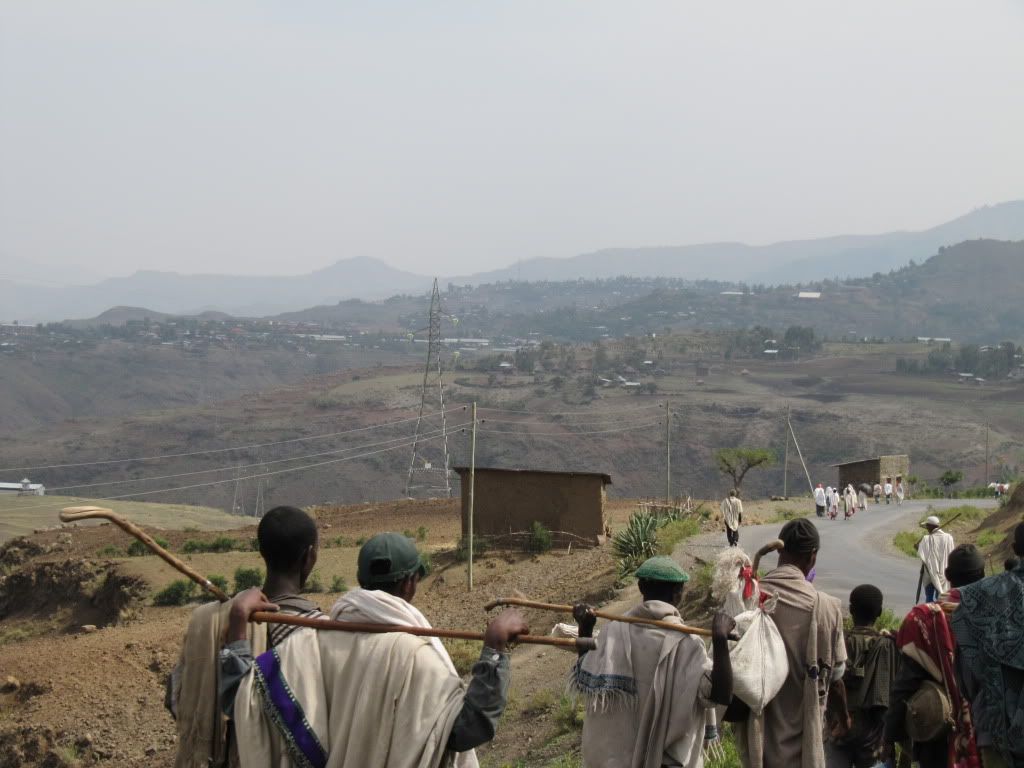
After a 25 minute flight we are headed to Lalibela, locatd further up at an altitude of 2,630 meters. We can already see the change from tropical Bahar Dar and Gondar to high elevations.
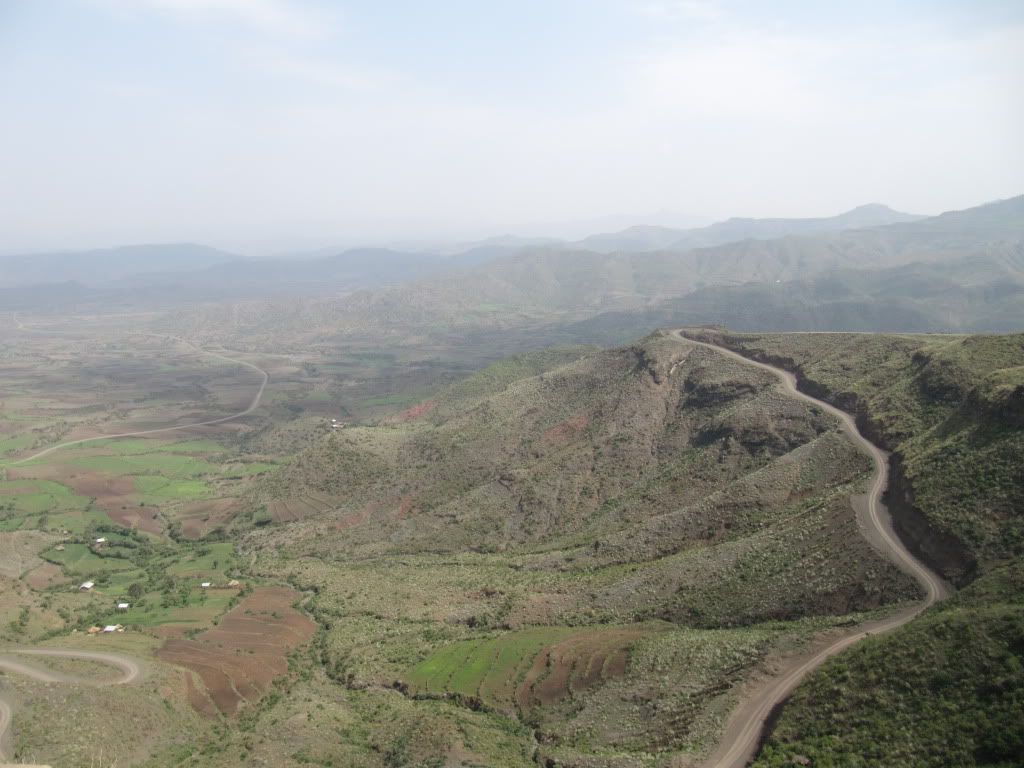
Lalibela served as a dynastic capital between the tenth and eleventh centuries, and the name is derived from its most famous ruler, King Lalibela. It is also the name of the Ethiopian restaurant in Dakar.
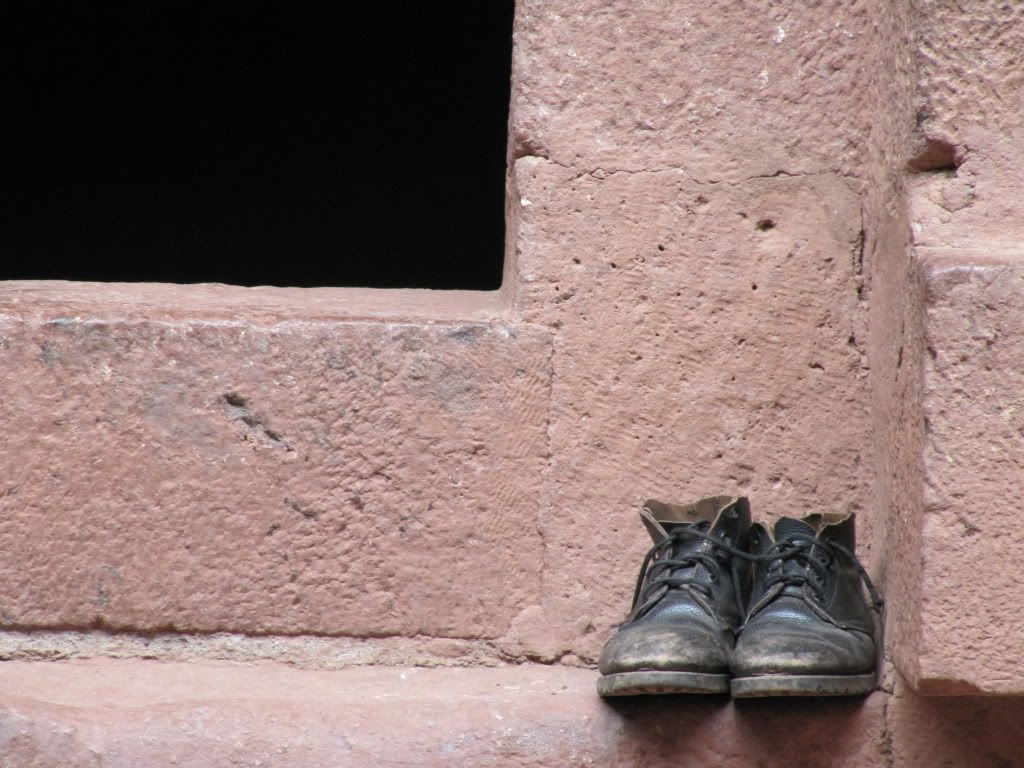
Here we go! Take off your shoes. Eleven times. (Don’t worry, it will be well worth it.)
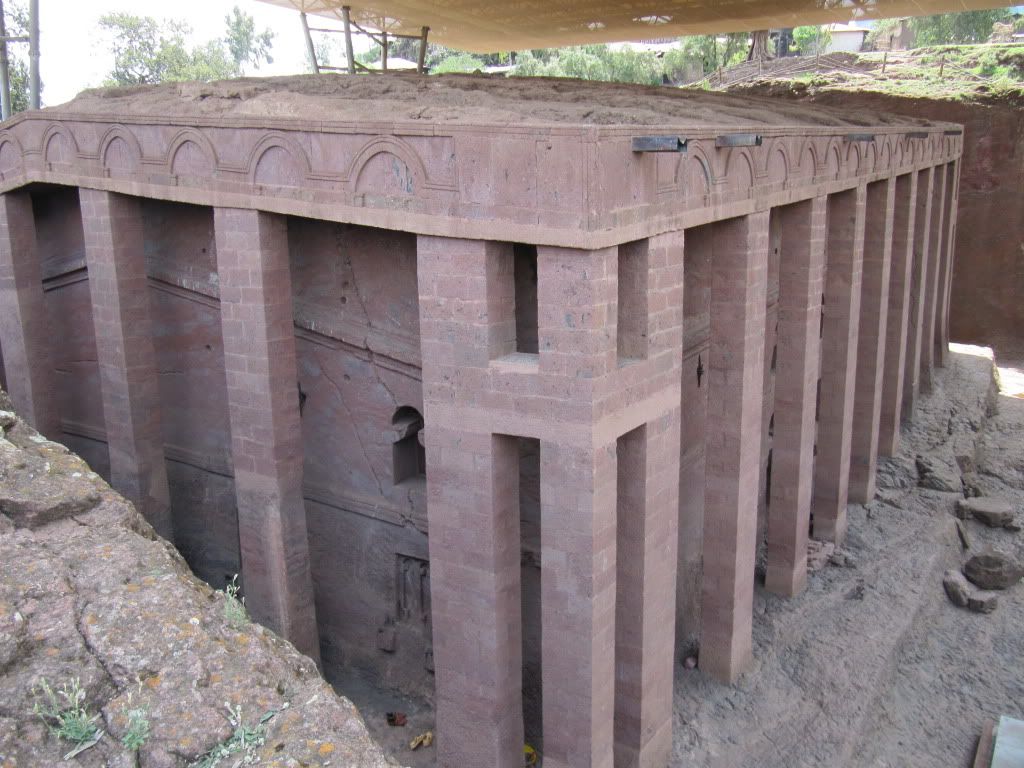
Since the sorry bastards builders who built these churches started with the rock beneath their feet, everything was constructed from the top down. And these churches are big (many about 10 meters high) so the amount of sweet and tears it took to make their way down and not make it one big broken mess totally boggles my mind.
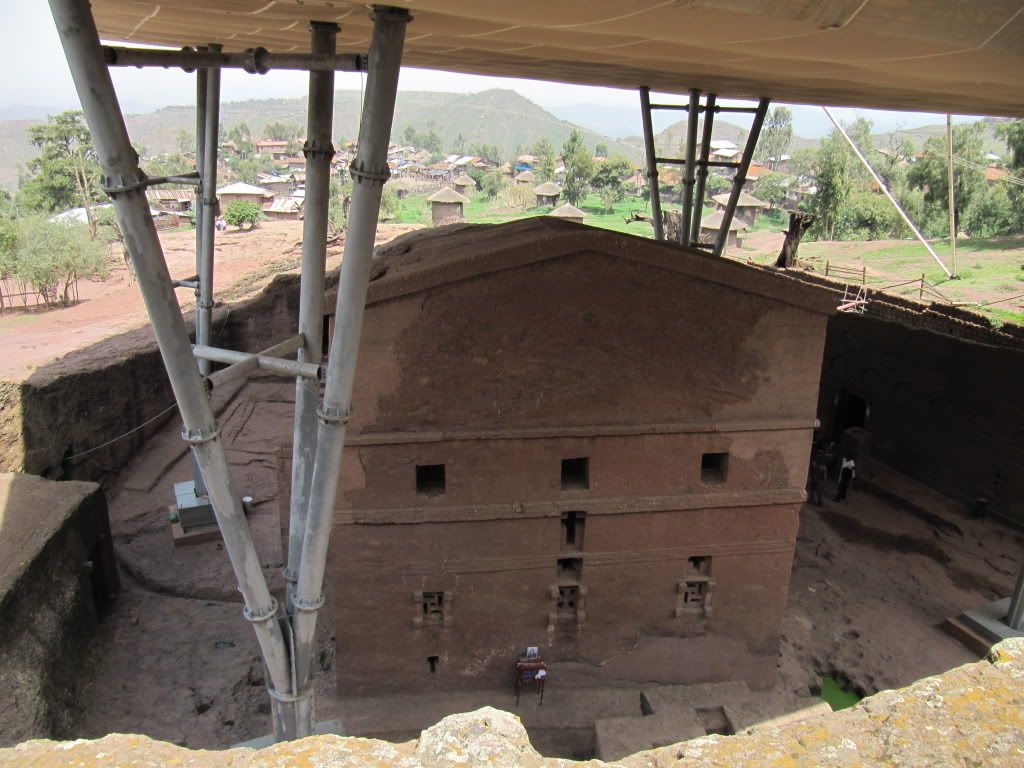
You can thank UNESCO for putting the big ugly canopy over the top of these world treasures. There is an effort to make these churches one of the wonders of the world, and I can understand why.
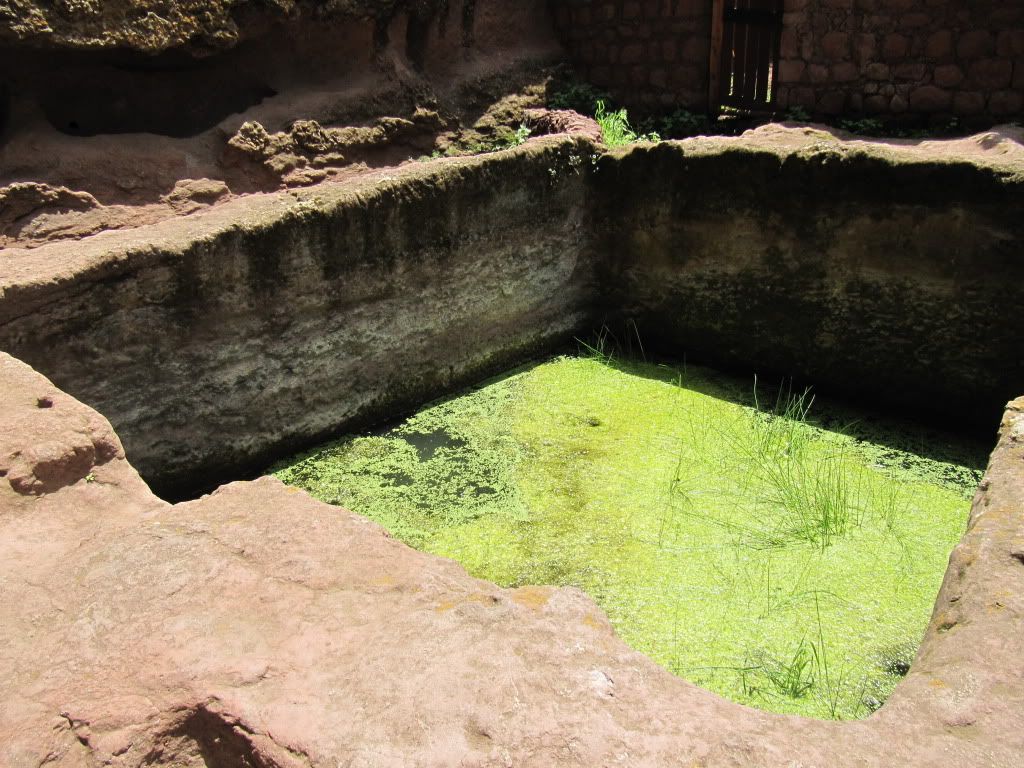
A fertility pool, which is still used during the big ticket Christian holidays. They grow palm leaves inside, and I don’t need to hop in there while on this trip…
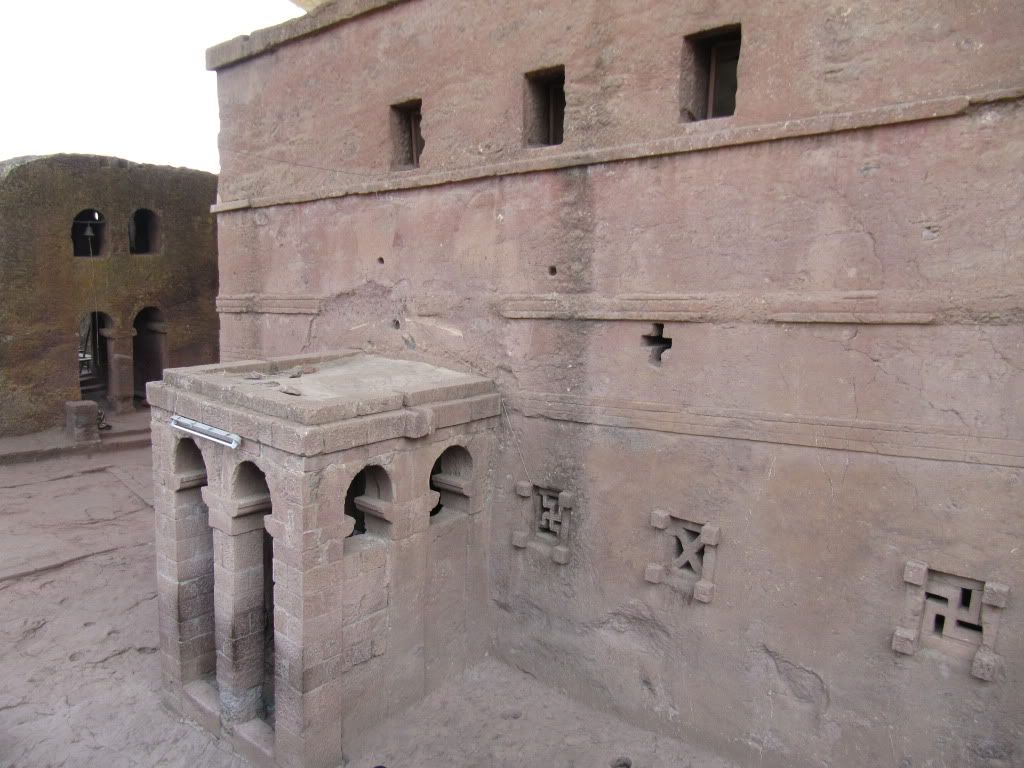
Various forms of the cross etched into the windows.
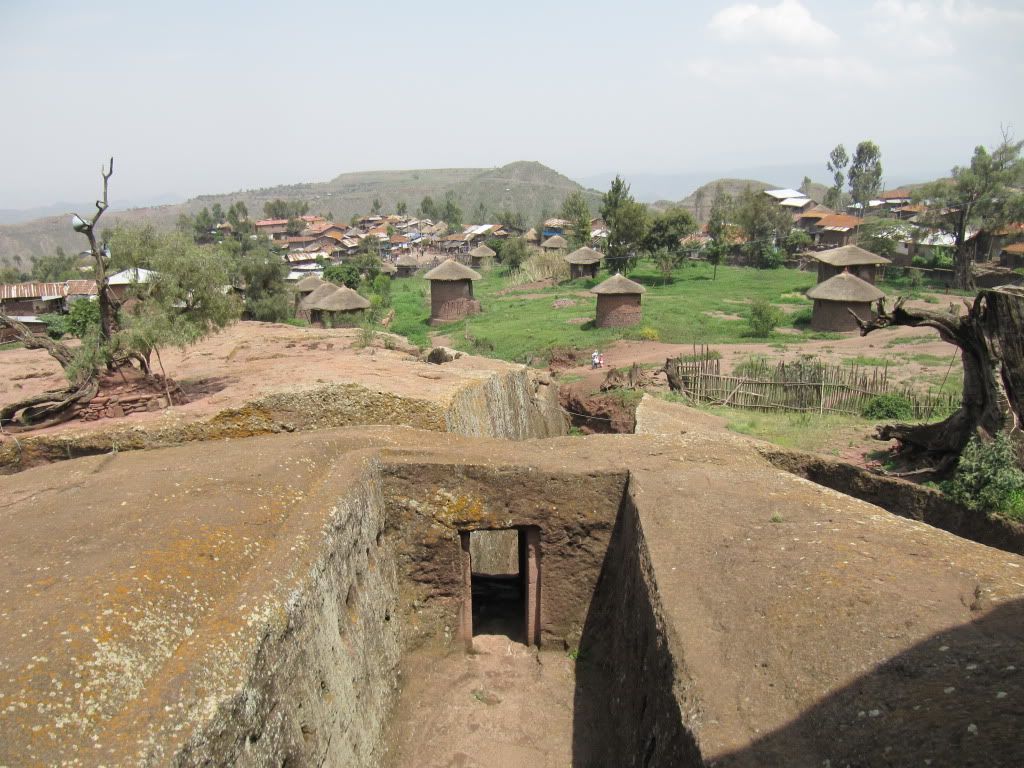
Just beyond this church you can see the unusual design of the traditional Lalibela houses – the first story houses animals, and their heat rises to heat the people on the second level.
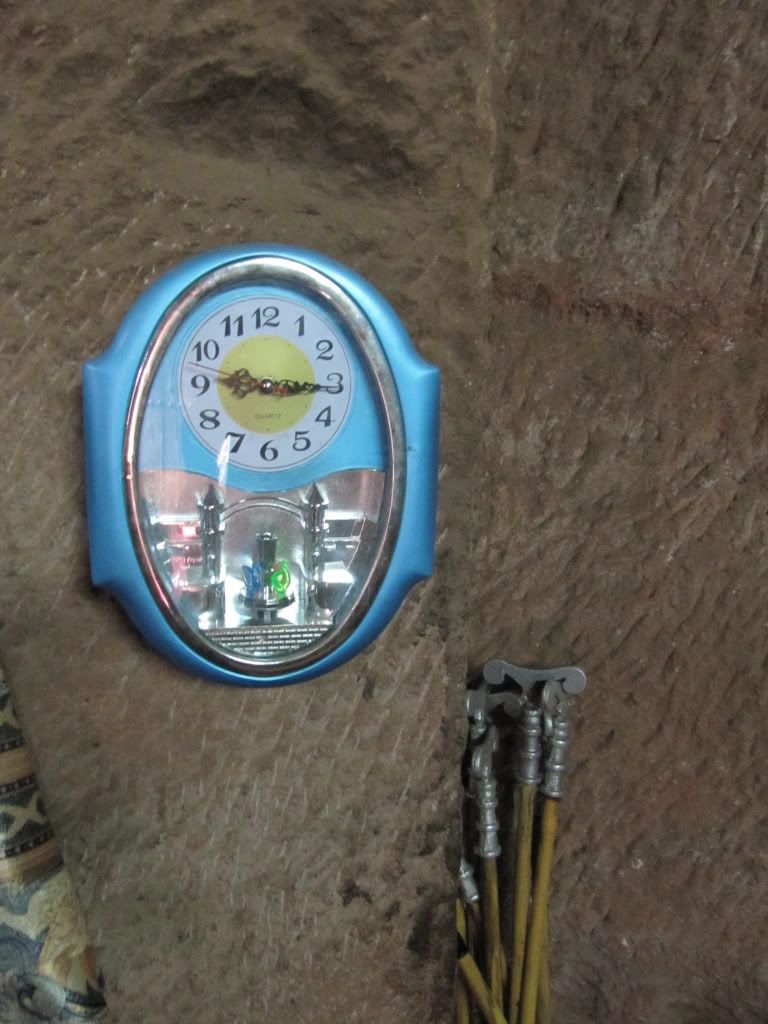
Did you know that Ethiopian’s have a different calendar and daily clock? Here in church, it is 3:15pm for the rest of the world, but this clock is still correct. Ethiopians measure time in 12 hour cycles starting at 0600 and 1800. So if you want to be fun, set your clock ahead six hours and play along.
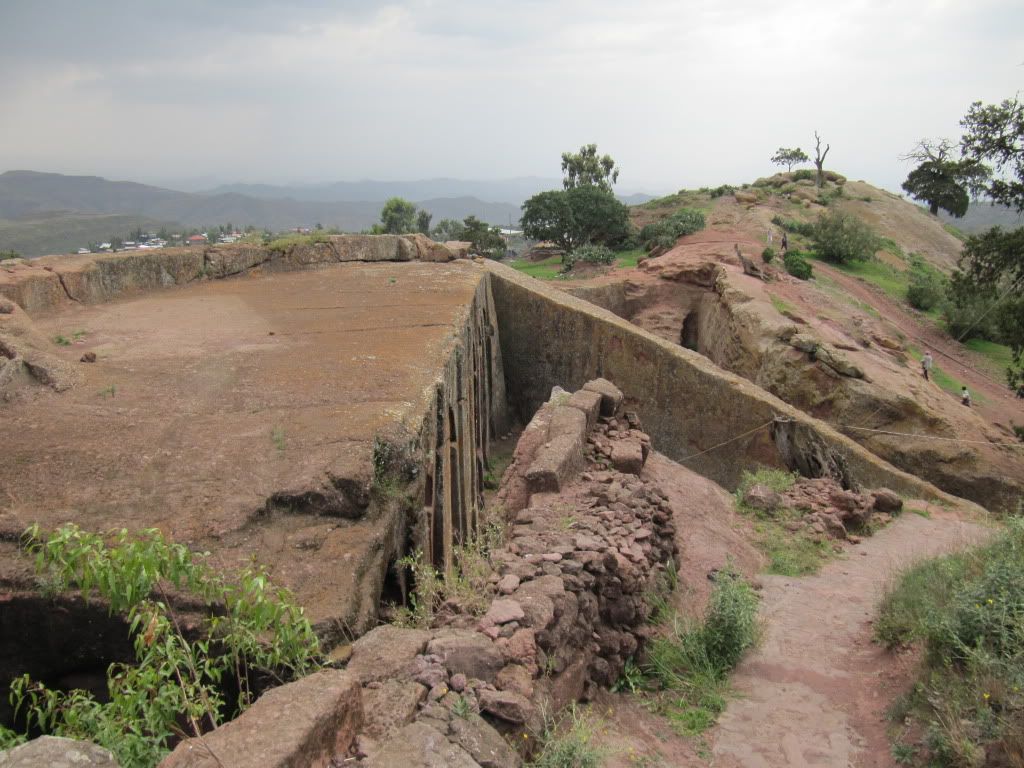
How long did all of this take to accomplish? I couldn’t really get a straight answer- but they ranged from “The King built them during the day, and the angels worked at night.” to about one hundred years. And why are these churches built so close to each other? I was told that it was easier to when you already sawing through rock to just keep on going right next door. I guess so…but my inside voice kind of questioned the logic of undertaking such a massive project in the first place. But that’s just between you and me…
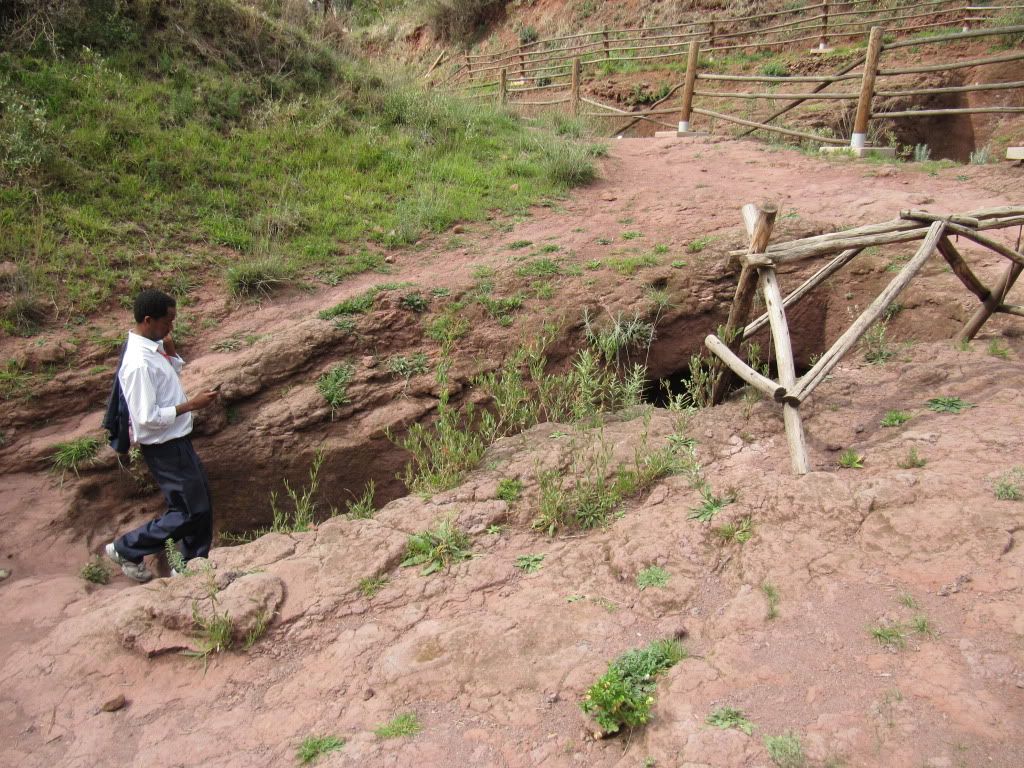
Our guide gives us two options to continue our visit of the churches. We can take the usual above-ground way, or opt for the underground tunnel, which signifies traversing from “darkness to light.” I am all about maximizing the authenticity of our experience, so I sign Sara and I up for 200 meter walk in the pitch black.
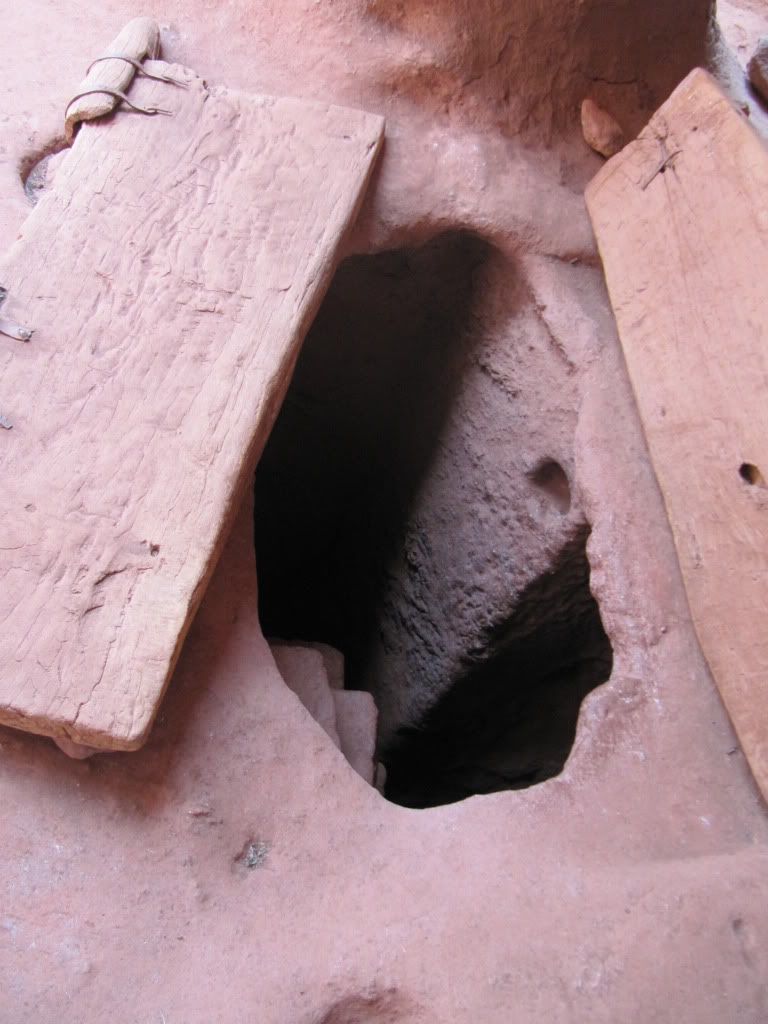
And we ascend from the tunnel hole it lands us on the front step of another church. Alhamdoulilah.
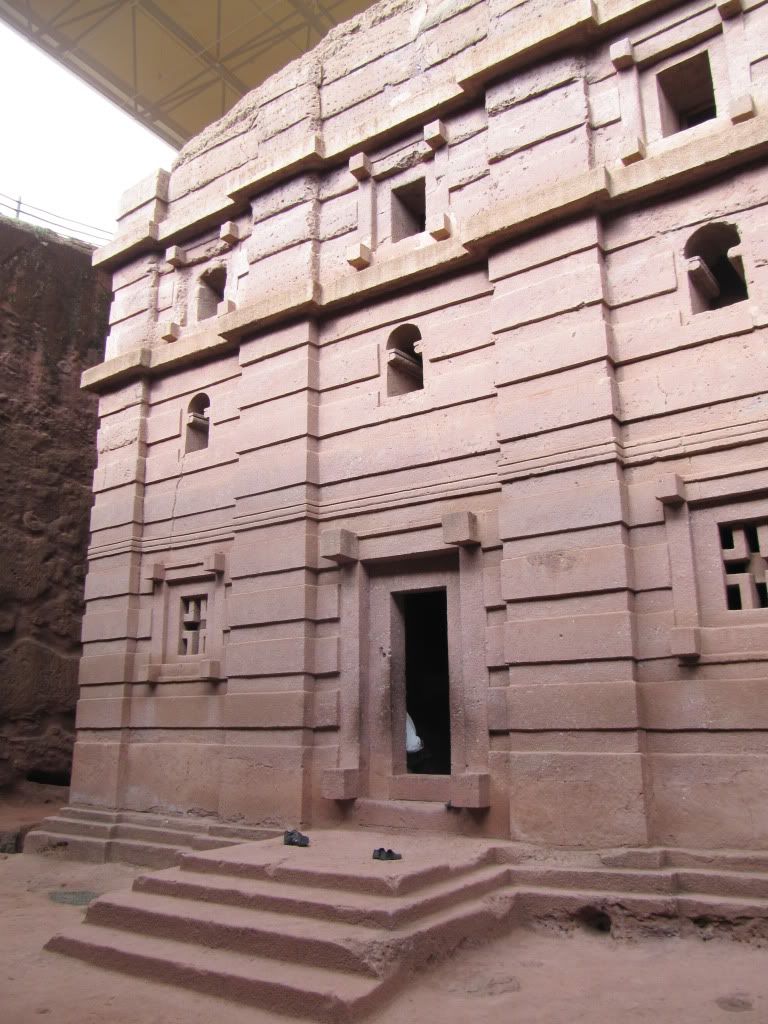
All sarcasm aside, the churches really are amazing to behold, especially given the time period of construction. Not only were they completely built from one stone- pillars and all- but they have impressive detail.
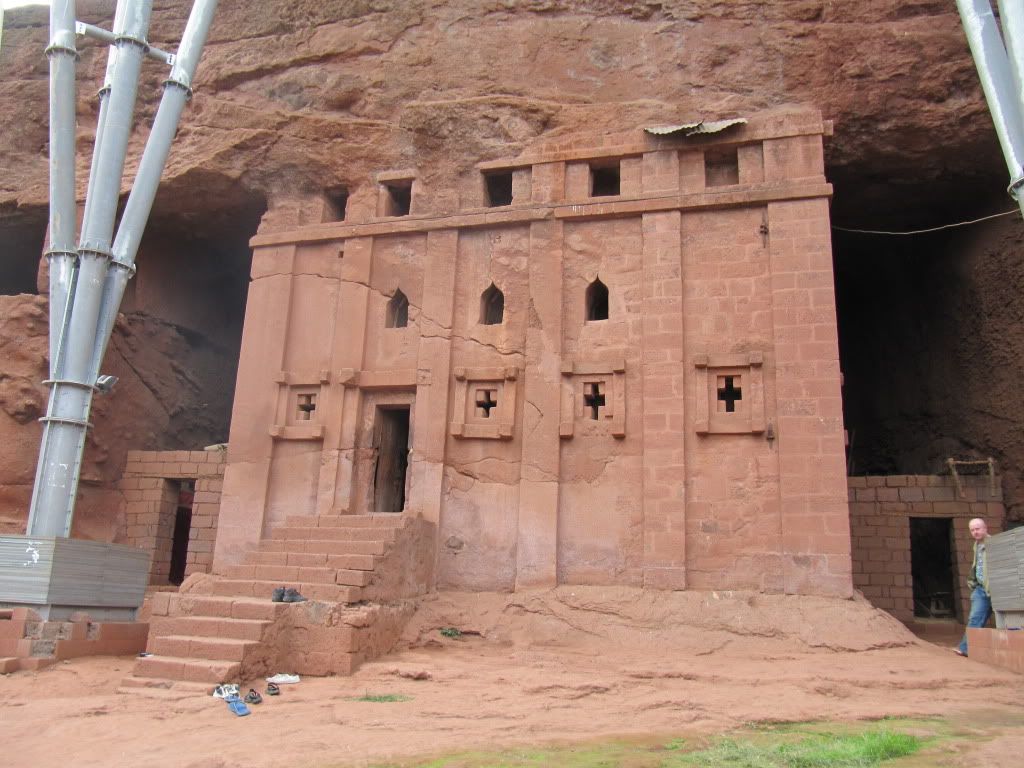
Okay, this church cheated a bit. It was built in a man-made cave, so it is not just chiseled out from one stone, as the rest are. “Have you been to Petra?” our guide asked us. “Yes” was our response that probably surprised him a bit. Petra kicks ass, but this is pretty cool too. Especially since you can go inside of these.
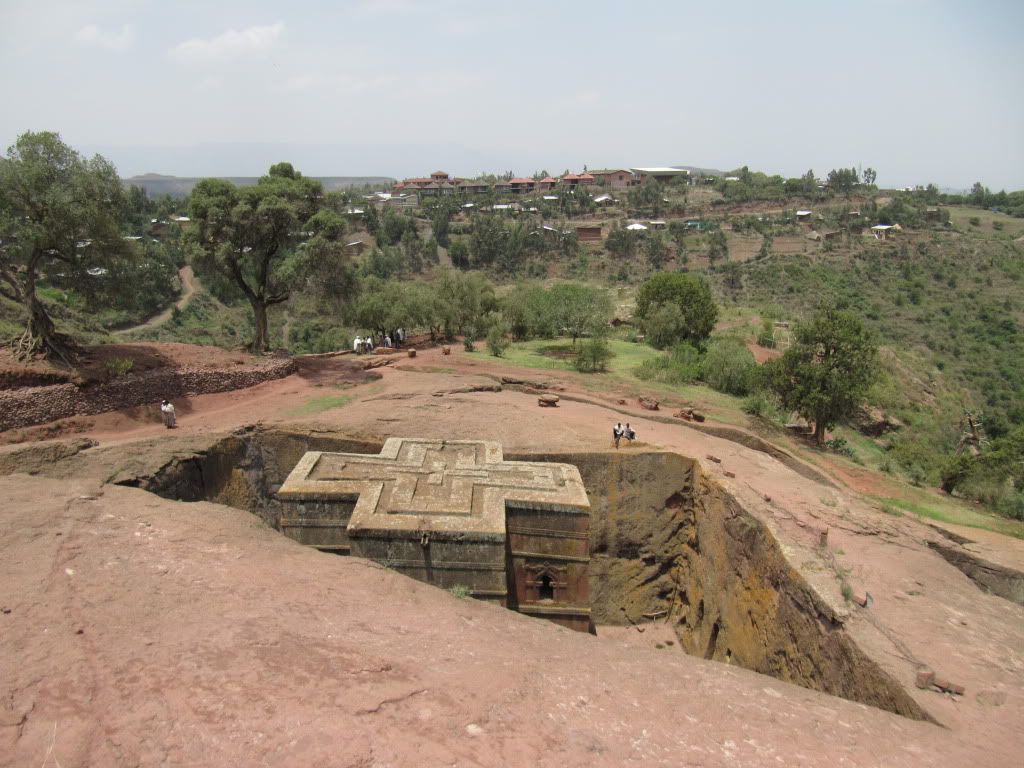
St. George’s Cathedral. St. George is the patron saint of Ethiopia, and this church was constructed last and is the most ornate of the eleven.
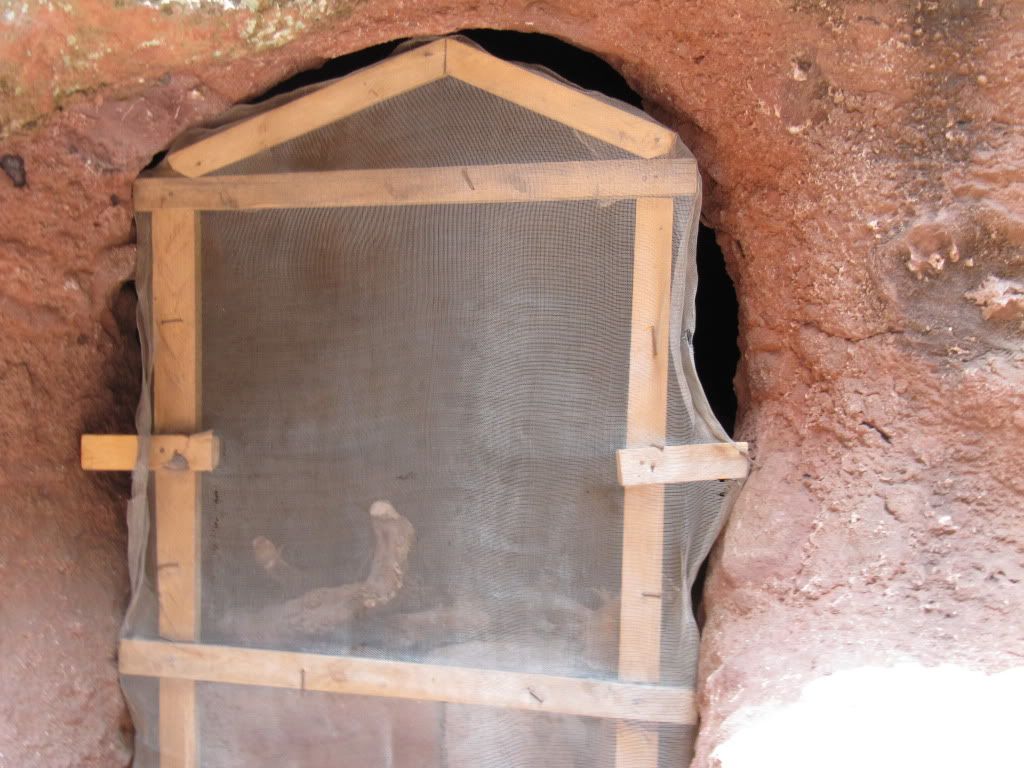
Out in the hot sun, we descended down to check out St. George’s at “ground level”. Here our guide showed us the remains of pilgrims from 500 years ago, just hanging out in a hole on the side of the rock. “So you guys just left them there?” was Sara’s delirious mark to our guide. I found this hilarious, our guide did not. At this stage for sure Sara and I have been pegged as one-eyed non-believers.

It was fricking hot outside, and I was pretty much mentally checked out from taking my shoes off so many times by this stage. Thanks to Sara for capturing the moment.
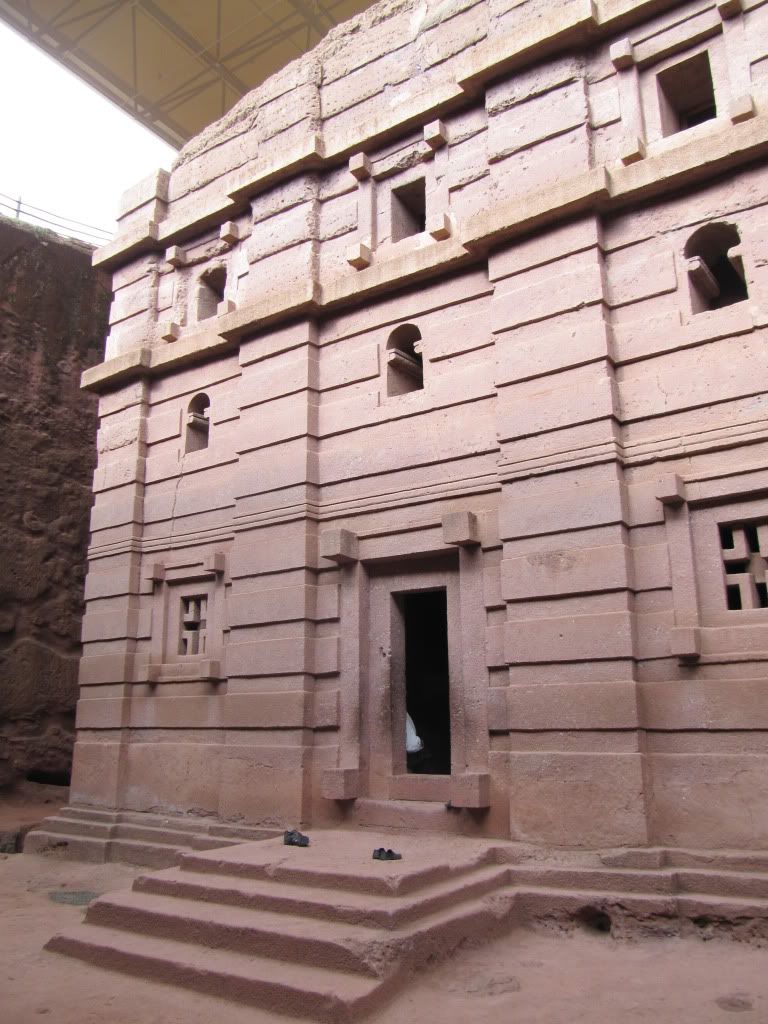
There is some amazing detail inside these churches (each church, by the way, is dedicated to different biblical figures).
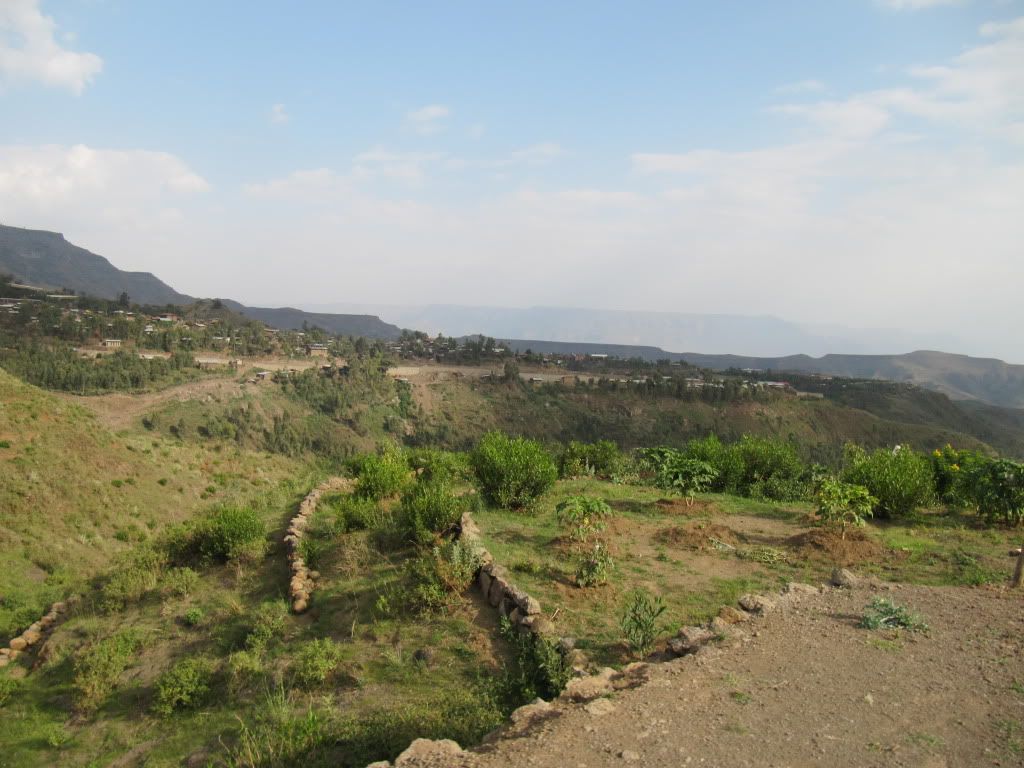
The population of this mountain town is 30,000. The churches, in addition to its strong agriculture tradition, is the lifeblood of the town. That said, life up in the mountains is hard, with the average life expectancy only 55.
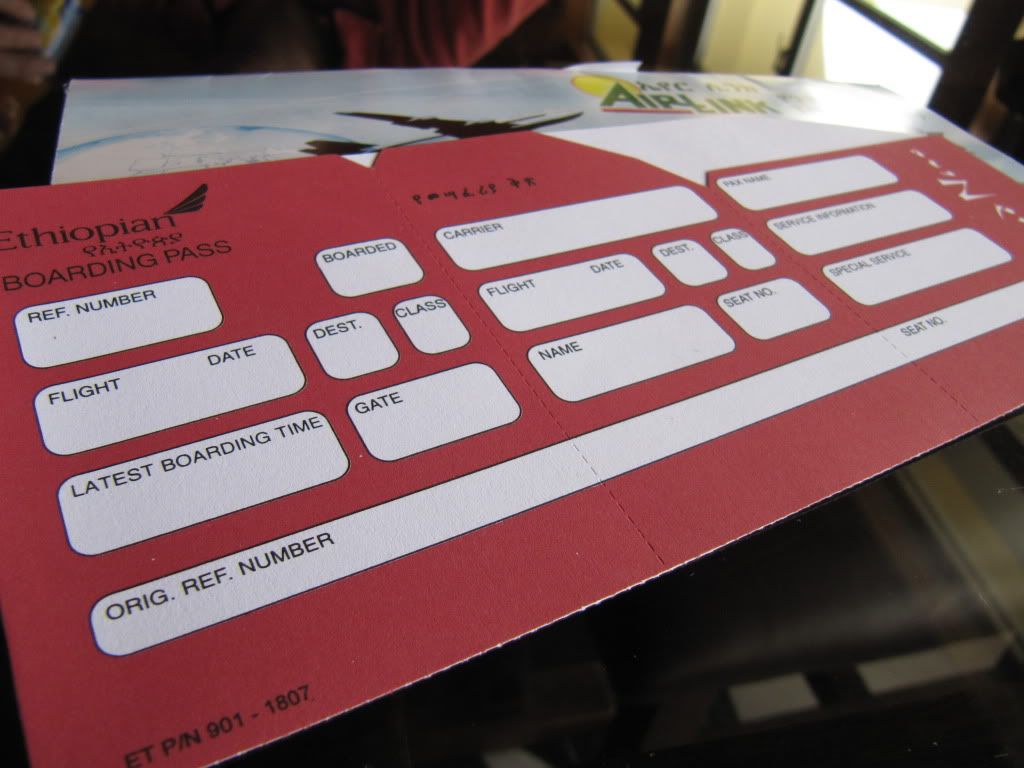
So here we are sitting at the Lalibela airport, and ready to see some pre-Christian ruins over in Axum. Our traveling is getting more hard core, as internet access becomes more remote and our boarding passes are getting less and less descriptive…
If you’re still reading, I congratulate you. Believe it or not, I strongly advise you to come over here and check these places out for yourself. Even take a tour. For all of my fatigue-fueled sarcasm and potentially insulting blasphemic observations, I have truly enjoyed the opportunity to see these places for myself. I know that I could have given you far more history into this highly-relevant place, but I’ll save that for better scholars and followers of organized religion.
